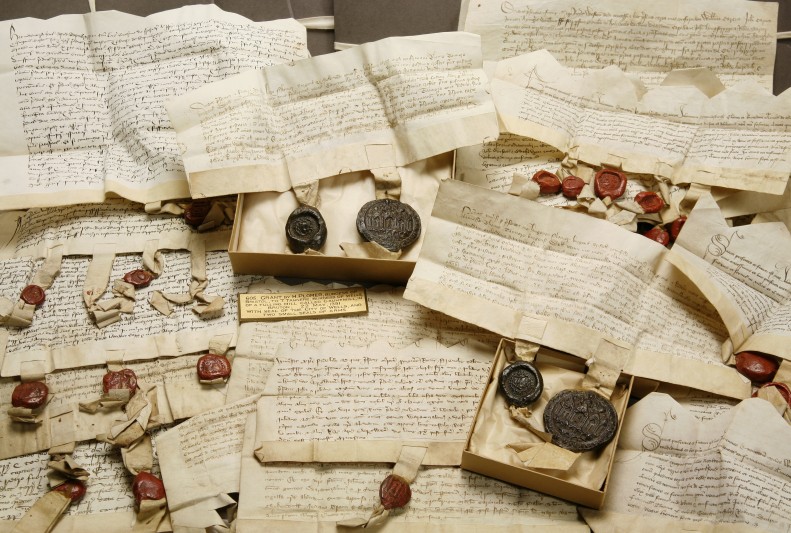Haringey Archive includes a significant collection of manorial documents and court rolls for the Manor of Tottenham. The collection is a fascinating source of local information and is still held in Bruce Castle, the 500-year-old former manor house of Tottenham, on the site of the original medieval manor house.
In the middle of the thirteenth century the Manor of Tottenham was owned by the Scottish royal family, but with no direct heir in 1254, it was divided into three separate parts, passing to Robert de Brus, John de Balliol and Henry de Hastings, Earl of Pembroke. Hastings later bequeathed lands to his cousin, William Beauchamp, first Baron Bergavenney. The manors were known as Bruce, Falconer, Daubeney, Pembroke and Mocking. John Gedeney, named in one of the manuscripts purchased, held the Manor of Tottenham from 1429 until 1512, and played a key role in re-uniting the various manors. A John Gedeney is recorded as Lord Mayor of London in 1427 and it is almost certain that these are the same person.
The seven manorial documents are an important addition to our existing collection. They are all on vellum and six retain intact or fragmented seals attached by vellum tags. The individuals named in the manuscripts are mentioned in various documents in our existing collection. Lord William Beauchamp (de Bello Campo) was a significant landowner, John Olneye a steward of the court, William Bagot a local feoffee, and Lord Roger Walden was later Archbishop of Canterbury. One of the manuscripts, Release to John Gedney, "totnmo", 1424, relates to a manorial document we were able to purchase with support from the Friends of the National Libraries in 2008. The other items are also of particular interest as they feature prominent women.
The documents are in excellent condition, with most of the original seals still intact. They will be fully accessible to the public, and with the approaching 700th anniversary of the Battle of Bannockburn and Robert the Bruce’s victory over the English in 1314, we hope to use our local connections with Robert the Bruce to promote our manorial document collection.
